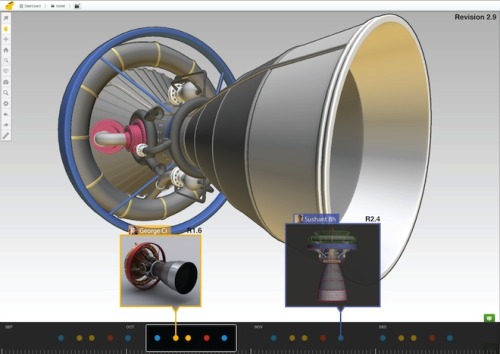From 3D printed moonbases to architectural wonders more to down to Earth, as we saw what awesome mixture 3D printing and architecture could bring, I was left wondering about what other technologies we could be remixing 3D printers with. Partially answering my curiosity, Wired highlights an exciting new world of Rocket science.. now 3D print compatible? Apparently so!
Sure, a 3-D printed car is cool, but it doesn’t go to space. And there’s probably a good reason for that, but now a competition is aiming to launch the newest manufacturing fad into the final frontier by challenging people to design 3-D printed rocket engines.Source: Wired Science
As in many other fields, 3-D printing is the latest DIY obsession in space, with people looking to print everything from moon bases to astronaut meals. The 3D Rocket Engine Design Challenge asks competitors to envision an engine capable of sending a small payload, like a 10-kg nanosat, into orbit. Designers will work in an online environment called Sunglass and can collaborate with others around the world. The plan is to print the projects in a stainless steel 3-D printer, and the top three designs will share $10,000 in prizes. The competition will officially open at SXSW on Mar. 9.
The sponsors behind the 3-D rocket engine challenge, Sunglass and a company called DIYRockets, hope to spur innovative ideas for space travel and bring down manufacturing costs. Whether the contest will actually produce something or is just another buzzword-filled presentation at SXSW remains to be seen.
Bringing 3-D printing to rocketry isn’t entirely new. NASA has some 3-D printers working to reduce the cost of new parts for its upcoming giant heavy-lift rocket, the Space Launch System. Using laser beams, their engineers fuse fine layers of metal powder to create a fully functioning part. A small company called Rocket Moonlighting has built and fired petite engines made from a 3-D printer. Hobbyists are also harnessing 3-D printers to make traditional toy rockets with firecracker engines, some of which look like they sprung from the imagination of a pulp sci-fi writer.
Of course, this is rocket science. Designers for the 3-D rocket engine challenge will need to have a good understanding of fluid dynamics, heat flow, engineering, and physics to make sure their finished models don’t explode in a tiny, adorable fireball. Because of this, the competition hopes to call on a wide variety of people and, using Sunglass, allow them to work on different designs together.

No comments:
Post a Comment